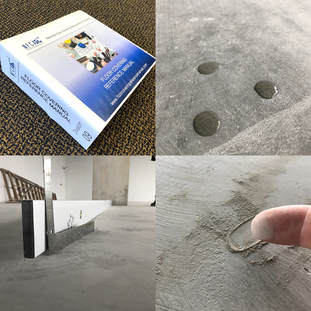|
Contributed by Chris Maskell The flooring industry is constantly challenged by the same repeating issues. Installing too early, wet concrete, non-flat sub-floors, sub-floor surface not prepared, heat not on, windows not in and lack of installer training and certification. In fact, as construction speeds up to meet demands for faster build times and with the threat of an increase in the cost of borrowing money lurking in the economic wings, the provision of acceptable conditions for the flooring contractor is becoming less likely. This raises the importance of supporting those in the construction team (Building Owner, Construction Manager, General Contractor, Design Authority, and Flooring Contractor) with good, timely information that helps all involved plan ahead for the floor covering installation. As one of the last significant trades onsite, the flooring contractor needs certain conditions, that if not planned for in advance, will be next to impossible for the Construction Manager/General Contractor to provide without extra time and/or extra money: two things in short supply at the end of a build or renovation. Change is possible, but requires a few things to be understood and acted on in advance. There is a generic Canadian floor covering industry reference manual available for specification, which supports all construction parties, and when included in the Division 09 section of the construction documents, means correct flooring processes and supportive language is available to guide the floor installation and all the points listed below.
These are some of the items that are commonly overlooked until the floor installer arrives on site with a crew eager to get the job installed… too late! No flooring contractor wants to delay his customer, and so the tendency to say yes to installing too early is a common occurrence Conversation, planning ahead and the use of available industry standards has been lacking in flooring. Yes we are just a finish trade, but unfortunately we are the finishing trade that brings lasting and deeply problematic issues for all involved when problems arise. Brands are damaged, business relationships broken and good companies end up in court. One final layer of security: third party inspection services available for the commercial flooring sector, referred to as the Quality Assurance Program (QAP) ensures specifications are read and that the above list of items is addressed in advance and that ultimately warranties are left in place. Once engaged, QAP assigns a certified flooring inspector who will review the project and issue a series of reports at critical stages of the installation. A flooring specific preinstallation site meeting is held, installer qualifications checked, specified products checked and that acceptable conditions required for a successful installation are provided to the flooring contractor. This is how we secure positive change for all construction parties involved in a floor covering installation. For more information go to www.nfca.ca (Editor's Note: Chris Maskell is the CEO of The National Floor Covering Association (NFCA) in Canada, which promotes industry standards for resilient, carpet, hardwood, laminate, cork and bamboo floor covering installations. Their mission is to engage professionals in the construction industry through education and compliance to national floor covering installation standards which provide a quality assurance platform to ensure successful installations on commercial projects.
0 Comments
Leave a Reply. |
AboutLet's Fix Construction is an avenue to offer creative solutions, separate myths from facts and erase misconceptions about the architecture, engineering and construction (AEC) industry. Check out Cherise's latest podcast
Get blog post notifications hereArchives
March 2022
Categories
All
|


 RSS Feed
RSS Feed
